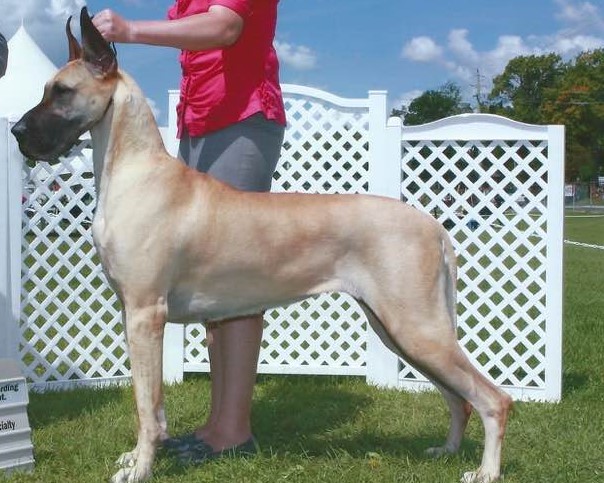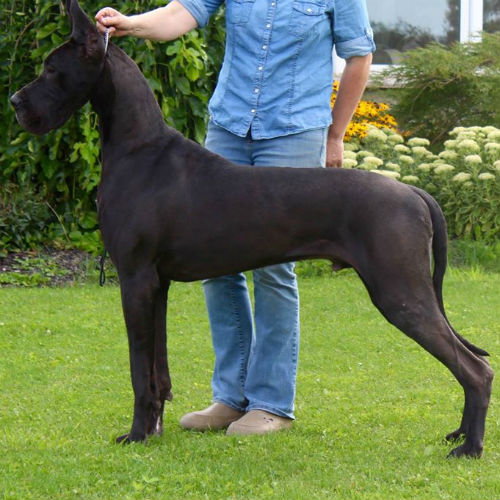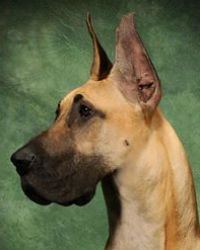Origin and Uses: this breed is German in origin and is thought to be more than 400 years old. It is descended from mastiff type breeds that were used by German nobility to guard and also to hunt wild boar.
General Appearance: a giant breed, tall and powerful: showing great strength, combined with elegance: well muscled and dignified, while being graceful and coordinated in motion for such a large breed: Often referred to as the ‘Apollo of dogs’: The male specimens are more substantial, and are notably more impressive in masculinity.
Height and Weight: males 30 -32 inches at shoulder, over 32 inches preferred and 140-175 pounds: females 28-30 inches, over 30 inches preferred and 110-140 pounds. Less than 28 inches would be disqualifying in a show specimen.

Coat and Colour: the coat is short, smooth and glossy: Colours are brindle…. Fawn….blue…black…. harlequin ….( white with torn black patches over the body) Boston…. (black and white) merle…. ( grey base colour with black torn patches on body) Mantled Merle….grey with black patches that includes white collar, white head blaze, white legs and white tail tip)
Temperament: spirited and courageous: friendly and dependable, never timid. Quite calm in nature and makes a good companion dog: Considered a gentle giant: a sweet, loving and very loyal breed with their families: They are also a natural guard dog and will bark if they sense an intruder or other suspicious sight or sound: Very affectionate and good with children and other animals. It is important that they be raised in the home as part of the family.
Feeding: Use a good quality kibble, adult formula for puppies as it is important to keep protein and fat levels low in this giant fast growing breed. Do not over feed puppies: keep them leaner. Do not use grain free foods. Adults are fed soaked softened kibble twice daily from a raised bowl. Exercise must be limited before and after eating. A raw diet can also be appropriate.
Training and Obedience: Crate training is a must for puppies. They are easily house broken. Early socialization and obedience training is highly recommended. They can be easily trained in basic obedience as they have a strong desire to please. They are not an ideal kennel dog and are not suited to living out doors away from family.
Activity and Performance: ‘Danes’ require daily exercise of multiple walks or a fenced area to run in order to build muscle for the large frame of an adult dog. Younger dogs under 2 years should not have forced exercise as it can be damaging to developing bones and joints. Mature dogs will enjoy biking, hiking and can be a good jogging partner: Some may also perform well in agility, dock diving, rally, barn hunt and fast cat. (Timed 100 yd event)


